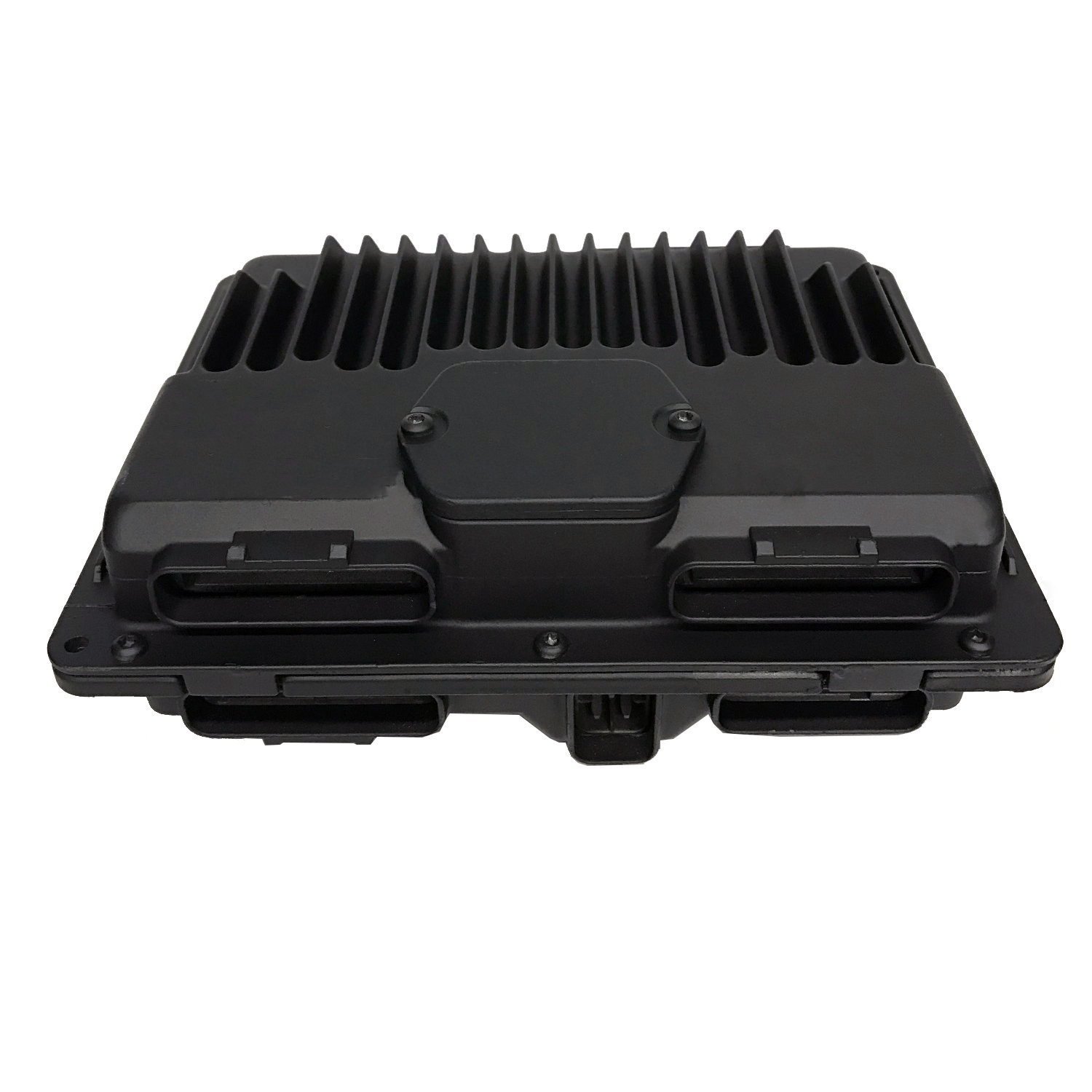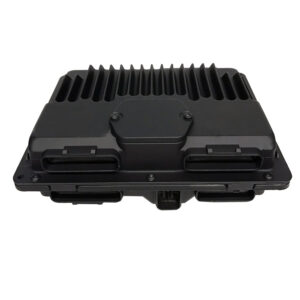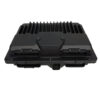Restore Your Truck’s Brain: The Core of Engine Performance
If you’re battling a persistent check engine light, rough idle, stalling, or poor fuel economy in your GM truck or van, the problem often lies deeper than a simple sensor. The Powertrain Control Module (PCM) is the central computer of your vehicle, managing everything from fuel mixture and ignition timing to transmission shifting. When it starts to fail, it can create a cascade of frustrating and hard-to-diagnose issues. This isn’t just a replacement part; it’s a definitive solution, pre-programmed with the latest GM software specifically for your vehicle’s VIN. This ensures you get restored performance and reliability, right out of the box.
Is Your GM Truck Showing These Signs of PCM Failure?
A faulty PCM can manifest in numerous ways. From my 20+ years in diagnostics, I’ve seen these modules cause symptoms that mechanics might misdiagnose as bad sensors or fuel pumps. Before you spend another dollar on guesswork, see if your vehicle is experiencing any of the following:
- ✔ Persistent Check Engine Light (CEL) that won’t clear
- ✔ Diagnostic Trouble Codes (DTCs) related to internal module failure, such as P0601, P0602, or P0606
- ✔ Vehicle randomly stalling or refusing to start
- ✔ Noticeable drop in fuel efficiency (MPG)
- ✔ Harsh or erratic automatic transmission shifting
- ✔ Engine misfires or runs rough, even after a spark plug change
- ✔ Failure to pass state emissions testing
- ✔ No communication with the PCM when using a scan tool
A Technician’s Notebook: The Phantom Misfire
I remember a 1999 GMC Jimmy with the 4.3L V6 that came into my shop. The owner had already replaced the cap, rotor, plugs, wires, and even the fuel pressure regulator chasing a random misfire. The codes were inconsistent. On a hunch, I checked the PCM’s driver circuit for the ignition coil. Using a lab scope, I could see the signal degrading as the engine warmed up. The PCM itself was failing under heat soak. We installed a VIN-programmed module just like this one, and the truck ran perfectly. It’s a classic example of how a failing 1998-2000 S10 Sonoma PCM can mimic other component failures, making a direct-fit, programmed module the most efficient repair.
Your Straightforward PCM Installation Guide
Installing your new PCM is a manageable job for a DIY enthusiast. The most important part is ensuring the vehicle’s security system relearns the new module. Follow these steps carefully.
- Safety First: Disconnect the negative terminal from your vehicle’s battery and secure it away from the post to prevent accidental contact.
- Locate the PCM: On most S10/S15/Sonoma models, the PCM is located in the engine bay on the right-hand (passenger) side, often near the firewall or inner fender. For vans and full-size trucks, it may be on the left side or near the battery tray. Refer to the fitment list for its specific location on your vehicle.
- Disconnect the Connectors: Carefully unclip and remove all wiring harness connectors from the old PCM. These connectors are often color-coded and have locking tabs that need to be released gently. Do not force them.
- Remove the Old Module: Unbolt the PCM from its mounting bracket. Keep the hardware as you may need to reuse it.
- Install the New PCM: Mount your new, pre-programmed PCM onto the bracket and securely re-fasten it.
- Reconnect Everything: Plug the wiring harnesses back into the correct sockets on the new module. You’ll hear a click as they lock into place. Reconnect the negative battery terminal.
- Perform Security Relearn (CRITICAL): Do not skip this step. Turn the key to the ‘ON’ position (do not start) for 10-15 minutes. The ‘Security’ light should turn off. Turn the key off for 10 seconds. Repeat this cycle two more times (for a total of 3 cycles). After the third cycle, the vehicle should start and run normally.
Verified Fitment Across a Range of GM Trucks & Vans
This module is engineered as a direct replacement for a wide variety of GM vehicles. Please verify your vehicle is on this list and that your original part number matches one of the compatible IDs (e.g., 16263494). Providing your VIN at checkout is essential for us to deliver a perfectly matched and programmed unit.
CHEVROLET 2500 PICKUP 00 Electronic Control Module; gasoline (LH front engine compartment)
EXPRESS 1500 VAN 00 Electronic Control Module; (LH rear engine compartment)
EXPRESS 2500 VAN 00 Electronic Control Module; (LH rear engine compartment), gasoline
EXPRESS 3500 VAN 00 Electronic Control Module; (LH rear engine compartment), gasoline
SAVANA 1500 VAN 01-02 Electronic Control Module; (LH rear engine compartment), ID 16263494
ASTRO 00-01 Electronic Control Module; (LH front by battery), ID 16263494
GMC 3500 PICKUP 00 Electronic Control Module; gasoline (LH front engine compartment)
EXPRESS 2500 VAN 01-02 Electronic Control Module; (LH rear engine compartment), gasoline, ID 16263494
S10/S15/SONOMA 99-00 Electronic Control Module; (RH front engine compartment), 4.3L
SAVANA 1500 VAN 00 Electronic Control Module; (LH rear engine compartment)
ASTRO 99 Electronic Control Module; (LH front by battery), (4.3L), ID 16263494
ISUZU HOMBRE 99-00 Electronic Control Module; (RH front engine compartment), 4.3L (6 cylinder)
SAFARI (GMC) 99-01 Electronic Control Module; (LH front by battery), ID 16263494
SAVANA 3500 VAN 01-02 Electronic Control Module; (LH rear engine compartment), gasoline, ID 16263494
EXPRESS 1500 VAN 99 Electronic Control Module; (LH rear engine compartment), ID 16263494
GMC 1500 PICKUP 99 Electronic Control Module; 5.0L, (LH engine compartment), ID 16263494
BLAZER S10/JIMMY S15 98 Electronic Control Module; (RH front engine compartment), w/build date opt ZN4
GMC 1500 PICKUP 99 Electronic Control Module; 5.7L, (LH engine compartment), ID 16263494
SAVANA 3500 VAN 99 Electronic Control Module; (LH rear engine compartment), gasoline, ID 16263494
SAVANA 3500 VAN 00 Electronic Control Module; (LH rear engine compartment), gasoline
TAHOE 00 Electronic Control Module; Classic style (LH front engine compartment)
YUKON 99 Electronic Control Module; (LH engine compartment), ID 16263494
ESCALADE 99 Electronic Control Module; (LH front engine compartment), ID 16263494
ESCALADE 00 Electronic Control Module; (LH front under battery)
EXPRESS 2500 VAN 99 Electronic Control Module; (LH rear engine compartment), gasoline, ID 16263494
S10/S15/SONOMA 98 Electronic Control Module; 6-262 (4.3L), w/build date opt ZN4
YUKON 00 Electronic Control Module; (LH front under battery), Denali
BRAVADA 98 Electronic Control Module; (6-262, 4.3L), w/build date opt ZN4
CHEVROLET 3500 PICKUP 00 Electronic Control Module; gasoline (LH front engine compartment)
ENVOY 99-00 Electronic Control Module; (RH front engine compartment)
EXPRESS 1500 VAN 01-02 Electronic Control Module; (LH rear engine compartment), ID 16263494
EXPRESS 3500 VAN 99 Electronic Control Module; (LH rear engine compartment), gasoline, ID 16263494
GMC 3500 PICKUP 99 Electronic Control Module; gasoline (LH front engine compartment), ID 16263494
ISUZU HOMBRE 98 Electronic Control Module; 4.3L (6 cylinder), w/extended build date opt ZN4
SIERRA 1500 PICKUP 99-00 Electronic Control Module; (LH front under battery), 6 cylinder
SAVANA 2500 VAN 00 Electronic Control Module; (LH rear engine compartment), gasoline
SUBURBAN 1500 99 Electronic Control Module; gasoline (LH front engine compartment), ID 16263494
CHEVROLET 1500 PICKUP 99 Electronic Control Module; 5.7L, (LH engine compartment), ID 16263494
EXPRESS 3500 VAN 01-02 Electronic Control Module; (LH rear engine compartment), gasoline, ID 16263494
GMC 2500 PICKUP 00 Electronic Control Module; gasoline (LH front engine compartment)
SILVERADO 1500 PICKUP 99-00 Electronic Control Module; (LH front under battery), 6 cylinder
SUBURBAN 2500 99 Electronic Control Module; gasoline (LH front engine compartment), ID 16263494
BLAZER S10/JIMMY S15 99-00 Electronic Control Module; (RH front engine compartment)
CHEVROLET 3500 PICKUP 99 Electronic Control Module; gasoline (LH front engine compartment), ID 16263494
SAVANA 1500 VAN 99 Electronic Control Module; (LH rear engine compartment), ID 16263494
TAHOE 99 Electronic Control Module; gasoline (LH front engine compartment), ID 16263494
BRAVADA 99-00 Electronic Control Module; (RH front engine compartment)
CHEVROLET 1500 PICKUP 99 Electronic Control Module; 5.0L, (LH engine compartment), ID 16263494
SAVANA 2500 VAN 99 Electronic Control Module; (LH rear engine compartment), gasoline, ID 16263494
SAVANA 2500 VAN 01-02 Electronic Control Module; (LH rear engine compartment), gasoline, ID 16263494
ENVOY 98 Electronic Control Module; (RH front engine compartment), w/build date opt ZN4
GMC 2500 PICKUP 99 Electronic Control Module; gasoline (LH front engine compartment), ID 16263494
Frequently Asked Questions
Frequently Asked Questions
What do I need to do after I purchase this module?
After you complete your purchase, you will need to send us your vehicle’s 17-digit VIN (Vehicle Identification Number). We use this to program the module with the correct, most recent GM software for your specific vehicle configuration before we ship it.
Is this part truly plug-and-play?
Yes, because we program it to your VIN, it arrives ready to install. No trip to the dealership for expensive programming is required. You will, however, need to perform the simple security relearn procedure detailed in the installation guide.
Will this fix my specific problem, like a P0300 random misfire code?
If the PCM is the root cause of the issue, then yes, this will be the solution. A faulty 1998-2000 S10 Sonoma PCM is a common cause for persistent misfires, communication errors, and other electronic issues that don’t resolve after replacing sensors.
My original part number is 16265035. Will this part work?
Yes. This module is a direct replacement for several part numbers, including 16263494, 16265035, and 8162634940. We ensure the programming matches your vehicle’s original requirements based on the VIN you provide.
What is the security relearn procedure?
It’s a simple process that syncs the new PCM with your vehicle’s anti-theft system. It involves cycling the ignition key and waiting for specific intervals, as outlined in our installation guide. It requires no special tools and is essential for the vehicle to start after installation.



